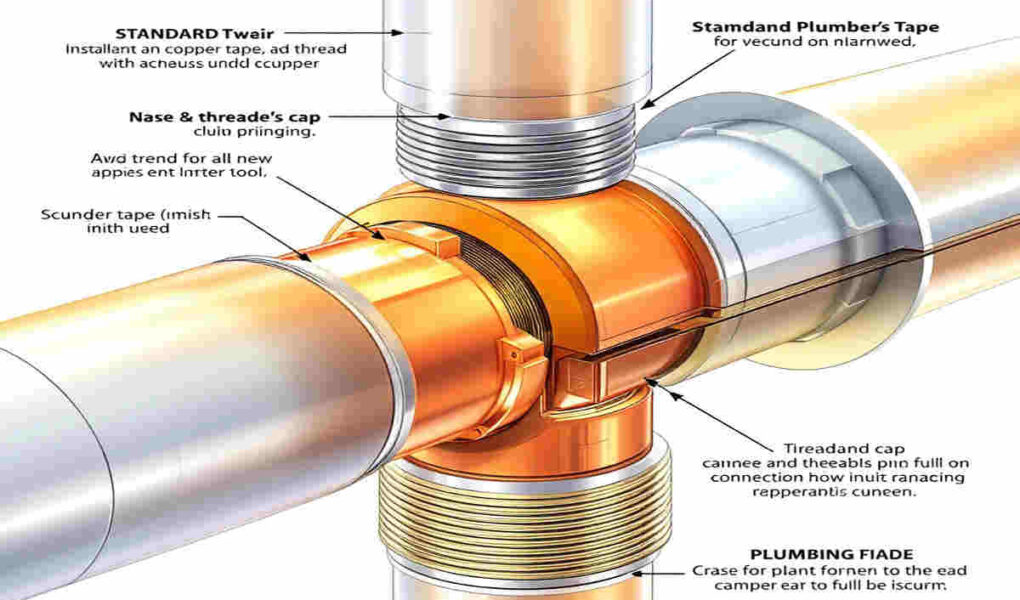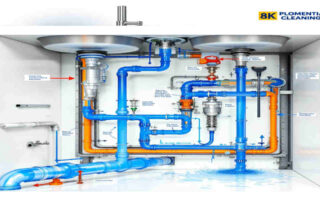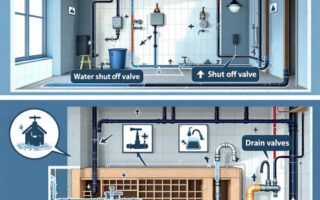Properly maintaining your home plumbing system is essential for safeguarding your home, ensuring safety, and avoiding costly repairs. A critical aspect of this maintenance is learning how to cap off home plumbing. Whether conducting renovations, fixing a leak, or temporarily stopping water flow, capping off plumbing is a vital skill to have or understand.
Understanding Home Plumbing and Capping Off
Your home’s plumbing system is a complex network of pipes, valves, and fixtures that deliver water and remove waste. Sometimes, you may need to cap off parts of the plumbing system to temporarily or permanently seal off a pipe. But what exactly does this mean?
Capping off plumbing involves sealing the end of a pipe to prevent water flow. This can be done for various reasons, such as during renovations, removing a fixture, or addressing leaks. It’s a process that ensures your plumbing remains secure, clean, and free of potential damage.
This guide will discuss the benefits, methods, and tools required for capping plumbing pipes. Whether planning a DIY project or consulting a professional, understanding this process is key to maintaining your home’s plumbing system.
What Does It Mean to Cap Off Home Plumbing?
Capping off home plumbing may sound technical, but it’s a straightforward concept once you break it down. Let’s dive into the basics of what it involves and why it’s necessary.
See also home plumbing systems
What Are Plumbing Caps?
Plumbing caps are fittings used to seal the ends of pipes. They come in various materials, including:
- PVC: Lightweight and commonly used for plastic piping.
- Copper: Durable and often used for hot water pipes.
- Galvanized Steel: Strong and suitable for outdoor pipes.
- Rubber or Plastic: Ideal for temporary solutions.
Temporary vs. Permanent Capping
Depending on the situation, you may need to either temporarily or permanently cap a pipe:
- Temporary Capping: A short-term solution, often used during repairs or construction. Rubber or plastic caps are commonly used for this purpose.
- Permanent Capping: A long-term solution for pipes that are no longer needed. This often involves materials like copper or steel, sealed with adhesives or threads.
When Is Capping Necessary?
There are several scenarios where capping off plumbing is essential:
- Renovations: When removing fixtures like sinks or toilets, the supply lines must be capped to prevent leaks.
- Repairs: If a section of a pipe is damaged, capping can stop water flow while repairs are made.
- Construction: During construction projects, capping protects pipes from dirt, debris, and pests.
- Unused Pipes: No longer used pipes must be capped to avoid accidents, leaks, or contamination.
By understanding these basics, you can see how capping off plumbing pipes is integral to maintaining a safe and functional home.
Why Is It Important to Cap Off Home Plumbing?
Capping off plumbing isn’t just a technical task—it’s critical to protecting your home and its plumbing system. Here’s why it’s so important.
See also santee in home plumbing
Preventing Damage and Contamination
Uncapped pipes can invite all sorts of problems:
- Debris and Blockages: Open pipes can allow dirt, dust, and debris to enter, leading to blockages over time.
- Corrosion and Contamination: Moisture entering uncapped pipes can cause rust or contamination, affecting water quality.
- Damage During Construction: In renovation projects, tools or debris can accidentally damage uncapped pipes.
For instance, imagine leaving a pipe uncapped during a bathroom remodel. Dust and debris can accumulate inside, clogging the pipe and increasing the risk of leaks later.
Maintaining Plumbing System Integrity
Capping off pipes helps maintain your plumbing system’s overall health:
- Preventing Leaks: Caps seal off unused pipes, preventing water from leaking or flowing where it isn’t needed.
- Maintaining Pressure: Properly capped pipes stabilize the water pressure in other parts of your system.
- Blocking Backflow: Caps protect against backflow, which can cause contamination or water wastage.
Avoiding Costly Repairs and Water Damage
The financial impact of not capping off pipes can be significant:
- Emergency Repairs: Blockages or leaks from uncapped pipes often require urgent (and expensive) fixes.
- Water Damage: Leaks can damage walls, floors, and ceilings, leading to costly restorations.
- Preventive Savings: A simple cap can save thousands of dollars in potential damages.
Enhancing Safety and Hygiene
Capping off home plumbing also prioritizes safety:
- Odor Control: Unused or open pipes can emit foul odors from sewage gases. Caps prevent this from happening.
- Sanitary Conditions: Caps prevent pests, insects, or bacteria from entering your plumbing system through open pipes.
By addressing these risks, capping ensures your home remains safe, hygienic, and free of unnecessary repairs.
How to Cap Off Home Plumbing: Step-by-Step Guide
If you’re ready to learn how to cap off home plumbing, here’s a step-by-step guide to help you through the process.
Tools and Materials Needed
Before starting, gather these tools and materials:
- Pipe cutter or hacksaw
- Adjustable wrench
- Caps or plugs (PVC, copper, steel, etc.)
- Plumber’s tape or sealant
- Sandpaper (for cleaning pipe ends)
Preparing the Pipe for Capping
- Turn Off the Water Supply: Ensure no water flows through the pipe.
- Clean the Pipe End: Use sandpaper or a clean cloth to remove dirt, debris, or moisture.
- Inspect for Damage: Check for cracks or corrosion that may affect the cap’s seal.
Methods of Capping
- Threaded Caps: Ideal for pipes with existing threads. Screw the cap tightly onto the end.
- Slip-On Caps: Slide the cap over the pipe end and secure it with an adhesive or clamp.
- Sealant Application: For permanent solutions, apply plumber’s tape or adhesive to ensure a watertight seal.
Safety Tips and Best Practices
- Ensure a Tight Fit: Loose caps can lead to leaks.
- Test for Leaks: Turn the water back on after capping and check for any signs of leakage.
- Call a Professional: If unsure about the process, consult a licensed plumber.
When Should You Cap Off Plumbing Vents?
Plumbing vents allow air to enter the system and maintain proper drainage. However, there are instances where you may need to cap them off.
Pros and Cons of Capping Plumbing Vents
- Pros: Prevents debris or pests from entering during construction.
- Cons: Improper venting can cause drainage issues and disrupt water flow.
Alternative Solutions
Instead of capping, consider installing a vent cover that allows airflow while keeping debris out.
Additional Tips for Protecting Your Plumbing System
Here are a few extra tips to protect your plumbing during renovations or construction:
- Communicate Clearly: Let contractors know about capping needs.
- Inspect Regularly: Check pipes for damage or issues during the project.
- Turn Off Water: Avoid accidental leaks by turning off the water supply to unused pipes.
See also tenant home plumbing




